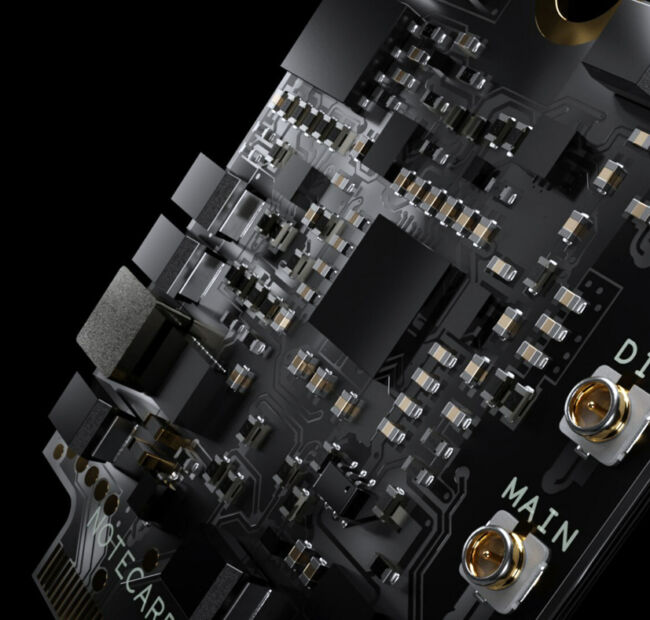Blues announces OTA capability for Notecard
- January 11, 2023
- Steve Rogerson

Just in time for last week’s CES in Las Vegas, Blues Wireless officially announced the Notecard outboard over-the-air (OTA) firmware update capability to increase IoT flexibility and security.
This lets device builders implement firmware updates in their devices without writing any code, but by making a few simple wiring changes between the Notecard and their microcontroller (MCU).
Developers can choose from a large number of MCUs, programming languages and real-time operating systems (RTOS), and can even perform updates on native applications with no code from Blues and no RTOS at all. This capability eases the developer’s IoT journey, bringing cellular cloud-connected products realistically within reach of every developer, no matter their skill level.
The ability to update firmware over-the-air is table stakes in IoT, enabling remote delivery of bug fixes and security updates to devices well after they’ve been deployed. To date, implementing firmware updates is a complex and highly risky endeavour, requiring code that safely swaps itself in-place, and reverting to last known good versions upon failure. This tricky code is generally placed within the application itself, or within its RTOS, requiring a special bootloader and firmware layout.
The Blues Notecard acts as a secure co-processor to offload cellular communication burdens from the application, including that of downloading and verifying firmware updates from the cloud. Now, by giving the Notecard control over the MCU’s strapping pins, the firmware update capability enables it to reset and lay down new firmware and data into the MCU’s storage from the outside, requiring no cooperation with the application or RTOS running within that target. The Notecard can install new firmware regardless of whether the MCU is hung, running rogue firmware, or just in need of new features and functions.
Many MCUs are supported. It is independent of RTOS and programming language, making it easier to develop and deploy a prototype, update it in the field, and even change RTOS after the fact.
Non-functional (bricked) devices damaged by corrupted firmware, malware attack or just an infinite loop can be recovered. Partial app updates can be performed, such as the installation of a new machine-learning model, saving on data usage costs for large updates.
Companies building cloud-connected devices need to consider how they’ll maintain and enhance their products as they scale from prototype to full field deployment of potentially hundreds of thousands of devices. This challenge only multiplies for cellular-based products. Blues has created the Notecard and Notehub specifically to remove the cost and complexity from IoT development, and to enable secure and economical operations at scale.
Notecard and Notehub work together to provide a complete high-scale device-to-cloud data pump. More than 800 forward-thinking companies, from start-ups to enterprises, use Blues to cloud-connect their products securely.
• Blues has announced a $32m series A1 funding round led by Positive Sum, and including new investors Four Rivers, Northgate and Qualcomm. Previous backers Sequoia, Cascade, Lachy Groom and XYZ also participated.
Blues is a hyperscale cellular IoT provider founded in 2019 by entrepreneur Ray Ozzie.
“We are thrilled to be partnering with Blues,” said Alison Davis Riddell, partner at Positive Sum. “They are well positioned to create an inflection point in IoT. Blues is clearly the culmination of Ray’s life’s work, bringing to bear all of his experience and passion. The company has strong market signal, with rapid growth and demand from some of the world’s leading companies to connect their products to the cloud securely, economically, and with unprecedented speed. Having worked directly in the IoT space for six years, I can confidently say that Blues’ approach is unlike anything we’ve seen, and the opportunity is tremendous.”




